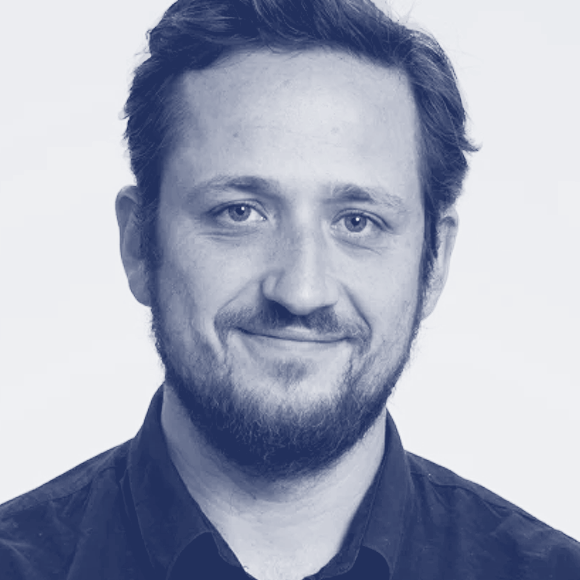This third week was a surprize for all of us not because of the typefaces projects but because of the temperature: every new day, the temperature was even higher than the previous day. It wasn’t an easy context to work hard on typefaces. For Monday 29 June morning, they have to complete on tracing paper the keywords in lowercases and capitals: hanfigecplurosty, HANFIGEPLUROSTY. Quickly after, some of the attendees jumped on the computer, scanning their lowercases, transforming the shapes draw by hand into outlines. Malou Verlomme spent the full day with the group to help them to correct their shapes, terminals systems, serifs sizes, choices they made depending the style of their typeface. The objective was to be ready as possible for the next day.
On Tuesday 30 June, Rainer Erich Scheichelbauer, from Glyphs, was with us for a full day. Mathieu Réguer started with a review of font formats, digitization principles, comparing different tools and technics. Soon after, Rainer Erich Scheichelbauer was focusing on Glyphs as design tool. His presentation was really enjoyable, because of his unique style to explain complex things with a high dose of humour. But also because Glyphs is a really intuitive tool, specially for beginners like Type@Paris attendees.
As past weeks, Wednesday are dedicated to the type crit in parallel to the normal course. This Wednesday 1 July we welcomed Henrik Kubel,who was late because of trip problems due to high temperature in France and United Kingdom. So, the type crits started around 1 pm, in a compacted version as much as possible until 6 pm.
Every hour, a group of attendees visited Henrik when the rest of the class staying with Malou Verlomme and myself. This new Wednesday type crit session was fabulous. The confrontation with various professionnal typeface designers is complex for attendees but an absolute necessity. When you’re on the learning curve of a new topic, this time typeface design, each day came with some new surprises, new ideas. It’s really difficult to keep control on your initial ideas, without the wish to transform everything everyday. Students have to learn how to deal with new comments, without destroying their own design just to test something new. Question of balance almost impossible to adjust but so intensely good.
Claudia de Almeida + Henrik Kubel
The Talks are in a separate place, called (Le Tank,)[http://letank.fr] a co-working space near Bastille in Paris. Each Wednesday two speakers and a facilitator. This evening was special, as one of Type@Paris attendees was the first speaker of the evening: Claudia de Almeida! Along Henrik Kubel, they presented incredible projects: how to be hired by Wired as design director, Real Simple redesign, Margaret Calvert collaborations, signages typefaces for Moscow métro, typefaces for New York Times magazine. Fascinating evening; watch the replay More #tptalks15 on Wednesday 8 July: Register now!

On Thursday, it was the last session with Malou Verlomme. After a day with Henrik, students had to synthesize the comments made by Henrik: how certain things had to change in their project. Malou was with them for that, and also here to help to finalize they letters shapes on key words used as starting point to work on the extension of the full typeface. I was with the group for the afternoon. I started with a long session about what make a typeface a consistent system: from basic things like weight ratio between caps and lowercases, how to design figures to how works em, en proportionality on punctuation widths, figures widths, or spacing concepts. I have spent the rest of the afternoon to help each attendee, focusing on adjustment the counters of their main glyphs, in order to improve the consistency of their full typeface. Designing a new typeface isn’t just a game based on the contrast ratio and serifs, terminals. Learning typeface design is: learning how to see the empty space around shapes, learning how to make the counters of various glyphs working together well, learning that the global letterform structure is more crucial than unique asymetrical serifs.
Day trip to Lyon: Musée de l’imprimerie
Friday 3 July started early on the morning at the train station in Paris. After 500 kms on the TGV (Train à Grande Vitesse, “high-speed train”),we arrived to Lyon, to visit the Musée de L’imprimerie and the Musée Gallo-Romain. Friday in Lyon was even hotter than the previous days in Paris. But it was simply a fantastic day: To be together for a full day, like a group of friends visiting a new place, but not only! At Musée de l’imprimerie, Matthieu Cortat, an excellent typeface designer based in Lyon, who also work part time at the Musée, was our host. He presented a large collection of french typeface specimens covering the 20th century: Fonderie Typographique Française, Fonderie Warnery, Hollenstein création, Mecanorma, Typogabor, Fonderie Olive, Derbeny et Peignot, Haas France, Photon, etc. Sadly too short, but already a good overview. We visited the Musée, who cover all the history of typography, printing technics. Everything in one place for anyone who want to know more about Aldus Manuce, Plantin bibles or Lumitype system…

Day trip to Lyon: Musée Gallo-Romain
On the afternoon, after a long walk in Lyon, we discovered the most impressive collection of Roman inscriptions at Musée Gallo-Romain: more than hundreds of inscriptions one place. We spent a fantastic time on front of beautiful romans capitals. A very inspiring moment for all of us.

It’s what happening when 20 typophiles are together in a museum! Register for the next free Talk now.
Learn more about TypeParis courses and conferences!
➼ Reports
➼ Type & graphic designers interviews
➼ Attendees feedback series






























